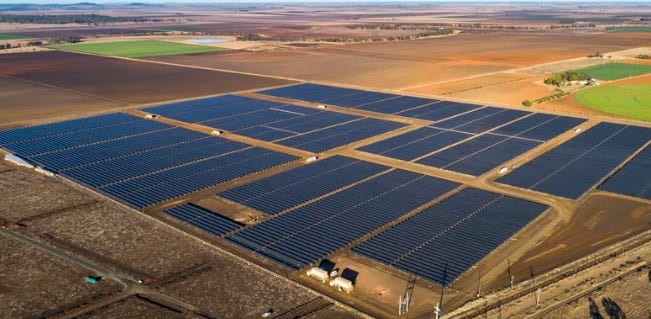

The huge leap in solar installations in Australia over the past 12 months – both in rooftop PV and large scale solar plants – is having a dramatic impact on the daytime electricity market, and coal is the biggest loser.
This stunning graph – published in the Australian Energy Market Operator’s Quarterly Energy Dynamics report on Tuesday – shows the enormous growth in average supply from solar in the first quarter of 2019, compared with the same quarter a year ago.
It shows that across Australia’s main grid, known as the National Electricity Market, up to an extra 2,000MW of solar was being produced on average – in turn, forcing a significant reduction in the amount of coal-fired generation, and of pumped hydro.
This is probably the biggest fundamental shift in the supply of Australia’s electricity grid, and one that will continue to reshape the grid, and remain at the forefront of planning by network and market operators.
The big increase in solar can be explained by the addition of 2,173MW of new large scale solar that has come on line and begun generation since the first quarter last year. Added to that, there has been more than 1.5GW of rooftop solar too – on both households and small and large businesses.
The graph above showed the change in average supply by hour of the day, the graph below shows the average change in supply over the whole quarter.
Here, it shows that solar – large scale and rooftop – were the two biggest movers, with an average of 700MW of additional output over the whole of the quarter.
There was, on average, an extra 200MW of wind, and gas was also up – mostly to fill in the evening peaks when the output of solar fell off.
But brown coal and black coal were both down. AEMO said black coal was hit by the impact of solar, the shift by owners into higher price bands, and problems with its reliability.
“Black coal-fired generation reduced by 133 MW on average, reflecting: displacement by solar during the daytime; shifts into higher priced bands; and a 217 MW reduction in average availability.
Hydro output was also down, by an average of 200MW, due to dry conditions over the quarter and low storage levels.
The problem for consumers, right now, however, is that while the amount of coal being burned for generation is down, the price of it is up.
As AEMO also noted, and we reported on Tuesday, the bidding patterns from the big coal generators has changed dramatically, with coal power stations bidding the price up to more than $100/MWh more than half the time. Gas generation, which is also a significant price setter, has also seen costs rising. The quicker more wind and solar, and storage, gets into the grid, the better.
Canada is about to go to the polls - and the country's climate and fossil…
Third and final giant transformer arrives for installation at first stage of state-backed big battery…
A wrong call on wind output has left some of Australia's best wind projects stranded…
China stats for first three months of 2025 show it installed 9 GW of new…
The ANU's Jorrit Gosens on China's thirst for green steel and the opportunities for Australia.…
Plans for a solar farm and big battery sail through federal environmental approval process in…